ZigBee 是一種在解釋兩個或多個設備之間的資訊時識別簡單頻率的設備. 主要用途是各種設備之間的短距離通信, 低消耗, 傳輸率低, 間歇性數據, 具有間歇性資料的典型應用, 和低反應時間資料傳輸.
本指南向您介紹 Zigbee 產品的功能和應用.
1. 什麼是 ZigBee 及其工作原理?
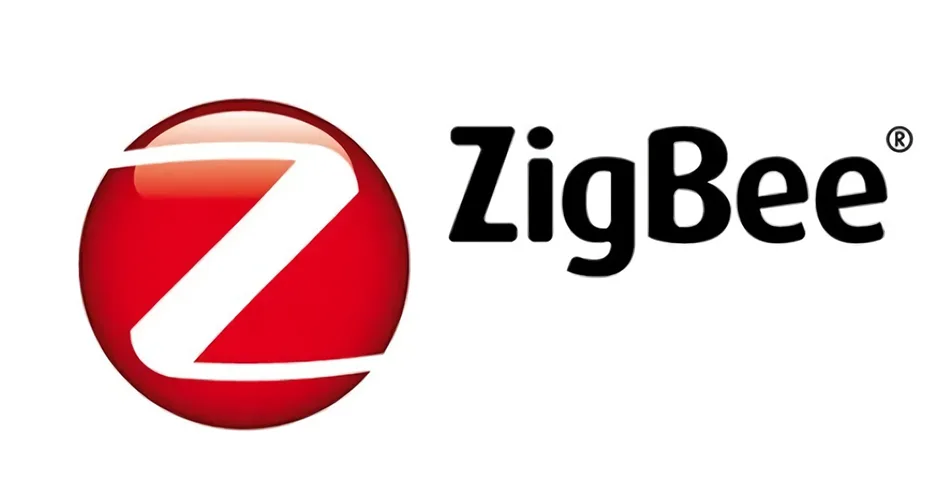
ZigBee技術源自於蜜蜂. 蜜蜂利用花朵和花粉的培養來相互交流. 以之字形飛行, 它們提醒其他蜜蜂注意花粉產量豐富的區域. Zigbee 設備因這種通訊模式而得名. 它有多個不同的名字, 以及描述一項已被複製但最初名為 Zigbee 的技術的標題.
由其他無線傳輸組成, ZigBee 是實現此過程的平台. 慷慨的距離, 75米, 可以是來源網路節點的延伸週長.
所有ZigBee網路節點均可監控, 轉移, 並收集數據. 這些節點也作為一個家庭工作. 網路節點或「父」節點可以與「子」節點連接並提供無線傳輸和接收資訊所需的交互,「子」節點可以是不同位置的多個不同單元. 「子」節點功能有限,「父」節點功能齊全. 命名為 (FFD) 對於“父”節點和 (射頻偵測) 對於「孩子」來說,家庭之間的互動遵循相似的規則.
2. ZigBee 比 WiFi 更好嗎? Zigbee 與 Wi-Fi.

1. 資料傳輸的速度
ZigBee 的資料在低層傳輸 (<250千位元組每秒), 但實際上不存在功耗,使得功耗最小. 測試顯示電池壽命延長至三個月.
WiFi 仍然被認為是重要的消費者並且與 LAN 相當, 利率高達 (11Mbps). 也, 外部電源提供了充足的貢獻者.
2. 多種特性及其環境應用
傳輸速率低等情況, 低功耗令人欽佩,這正是 ZigBee 的用途. ZigBee 網路改進了在涉及工業和環境控制評估的應用中使用感測器的網絡.
無線上網 在一個區域上使用. 建築物, 具體來說, 是大多數人在描繪一個區域時想到的,但可以擴展到周圍環境. 通常, 一百米, the range comes in the form of a router that connects to the devices using it for the transmission of data.
3. Zigbee 及其與全球其他產品的關係
ZigBee is new. 2004 saw the emergence of this technology. While it was the first of many to appear, the promotion of Zigbee was dampened by cost and reliability issues.
WiFi is a vast information highway with a lot of applications.
The difference is extreme between the two – WiFi and Zigbee. Yet, the competition globally is similar, making it difficult to market. The aspect of interference from the meshing of the two technologies has made it harder to promote. Resulting in the lack of exposure to Zigbee.
3. Zigbee 及其變體:
• In December 2000, a group came together to introduce the IEEE 802.15.4 標準.
• The ZigBee Alliance was launched in August 2001.
• The ZigBee 1.0 標準 (aka ZigBee2004) was finalized in December 2004 and later announced and made available for download in September 2005.
• December 2006 – Zigbee 1.1 is launched. A revision of the original. Alternatively known as ZigBee2006. It has made a number of modifications compared with the original ZigBee 1.0. These new features are the ZCL, the programs’ “cluster” library, Group Device, and recording of Multicast used on the Zigbee network. 也, a feature was removed: Key Value Pair formatting or the acronym (KVP).
• ZigBee standard was revised again in October 2007 (called ZigBee2007), launched ZigBee and ZigBee Pro Feature Set two instruction sets. This new standard ZigBee Alliance focuses more on three application types of expansion including: 1. Automation of the Home 2. Automation of commercial buildings 3. The infrastructure of advanced meter recording.
4. Zigbee通訊協定簡介
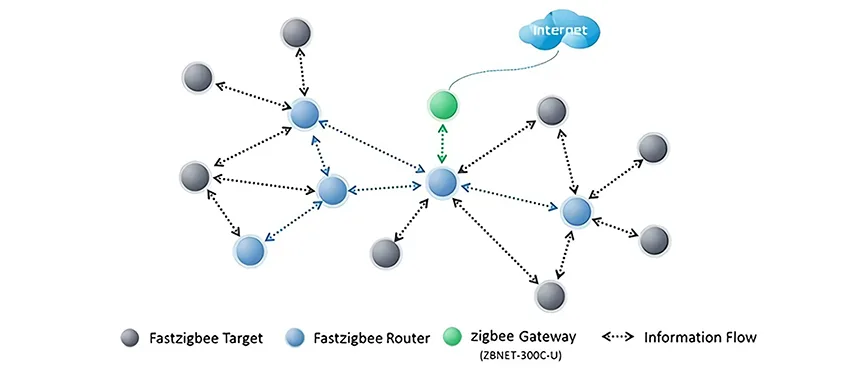
紫蜂, like other wireless communication protocols, is constantly evolving. From the original 網狀網路 to the development of operational layers for several types of products, to the latest ZigBee3.0, which strongly supports the interoperation of thirty-five distinct types of products.
Based on IEEE802.15.4 standard, ZigBee is applied in the field of wireless network data monitoring and control applications, with special emphasis on simple and easy to use, 短距離, 傳輸率低, 低功耗 (long battery cycles) and very low-cost product market positioning. It can be widely used in the industrial Internet of Things, 家庭自動化, 醫療保健, 智慧農業, consumer electronics, remote operation, and other industries, with broad application prospects.
Expounding the significance of the ZigBee communication protocol is huge. Independent companies in the past, every company has its own technology and standard regulation, 且無線模組之間只有互相通信. 沒有成立獨立的公司來保持有效的溝通,因此, 互聯性變得毫無意義. ZigBee標準化的正面意義; 透過通訊鏈路相互連接, 讓一切互聯, 推動產業快速健康發展 工業物聯網, 讓我們的工作和生活更聰明、便利.
5. Zigbee通訊頻率介紹
主流是2.4G. 還有歐洲樂隊, 868兆赫茲, 和北美樂隊, 915兆赫茲.
在世界上大多數國家, 您必須支付頻率使用費才能使用無線電設備, 包括手機通訊. It’s just that the mobile operator or service provider has already paid this fee to the state and collected it from users in numerous ways.
Free frequency band refers to a band divided by each country according to its actual situation and considering the consistency with the regulations of other countries in the world, which is specially used for industrial, 醫療的, and scientific research (ISM band). Zigbee can be used free of charge.
6. Zigbee網路技術 (網)
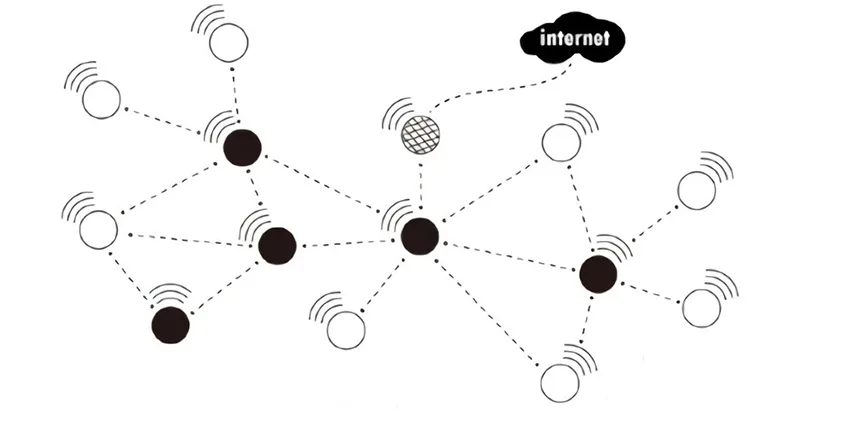
網路初始化過程:
• Determine the network coordinator.
• Conduct the channel scanning process.
• Set the network ID.
節點透過協調器加入網絡:
• Find the network coordinator.
• Send the Associate request command.
• Wait for the coordinator to process.
• Send data request commands.
• Reply to confirm networking.
節點透過現有節點加入網路
ZLG Zhiyuan Electronics based on Silicon Lab EFR32MG chip design of ZM32 series ZigBee module, give full play to the advantages of ZigBee protocol, combined with the accumulation of innovation in the wireless industry, ZLG Zhiyuan Electronics can provide customers with three different networking applications.
7. Zigbee技術的優點和缺點
Zigbee技術的優點
• Low power usage: ZigBee devices are very power-saving due to their low transmission rate, the transmission power of only 1mW, and the use of sleep mode, low power usage. ZigBee devices have been estimated to last anywhere from six months to two years on just two sizes of five batteries, which is more than any other wireless device.
• Low cost: The onset of the first purchase of a Zigbee is $6 但很快就會減少到 $1.5 – 2.50. ZigBee 協定無專利. 也, ZigBee 價格實惠,這是必不可少的.
• 延遲短: 通訊延遲和睡眠啟動時間明顯較短, 搜尋設備通常為 30 毫秒, 15睡眠啟動毫秒數, 活動設備通道存取時間為 15ms. ZigBee 技術可用於工業/商業領域的延遲要求.
• 網路容量大: 一個星型結構的 Zigbee 網路最多可容納 254 「子」設備與一個「父」設備, 同一位置最多可以有一百個 Zigbee 網絡,並且可以重新排列組成.
• 可靠的: 固定頻寬上的預留時隙使資料衝突策略無縫運作. Where the plan is implemented, it allows avoidance, making conflicts or collisions a non-issue. The MAC layer includes or incorporates data transmission. Each sent packet must wait for acknowledgment from the receiver. Any issues with the transmission are easily resolved by resending the data.
• Security: The ZigBee ensures packet integrity using a check that is cyclic and the acronym is (CRC). The check is for redundancies. It also incorporates the AES-128 encryption algorithm supporting authentication. Each unit determines its own security features.
Zigbee 的缺點
• Affordability: 現在, TI is the company that has a generous number of ZIGBEE chip shipments. They are producing them and marketing them at two to three dollars. Keeping the cost below ten dollars is a challenge. The “Parent” and subsequent “Child” nodes can be numerous in the Smart Home setting.
• Stable Data: At this time, Zigbee uses a 2.5G frequency in the ISM frequency band, which is weak when working against diffusion of data and its wall penetrability. In a Smart home setting, the Zigbee is inefficient causing the homeowner to overcompensate and introduce amplifiers that produce toxic radiation while ZIGBEE’s characteristics and or features create a less dangerous environment by itself.
• AD hoc network uses and functions: Zigbee is unique. The network and supports are effective self-recovery features. With that being said, the applications for strategic positioning in the commercial sectors are tremendous. Yet unfortunately, the AD hoc network and its functions are made redundant by fixtures in the Smart Home.
8. Zigbee 聯盟及其定義
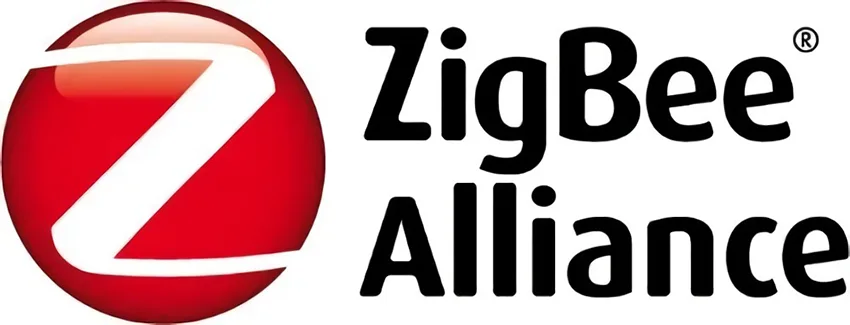
It began in 2002, the Zigbee Alliance is considered an open, non-profit organization.
A sustainable future with the will of the public to propel themselves into greater freedoms for the world, is the underlying goal of the Zigbee Alliance.
9. ZigBee用在什麼地方?
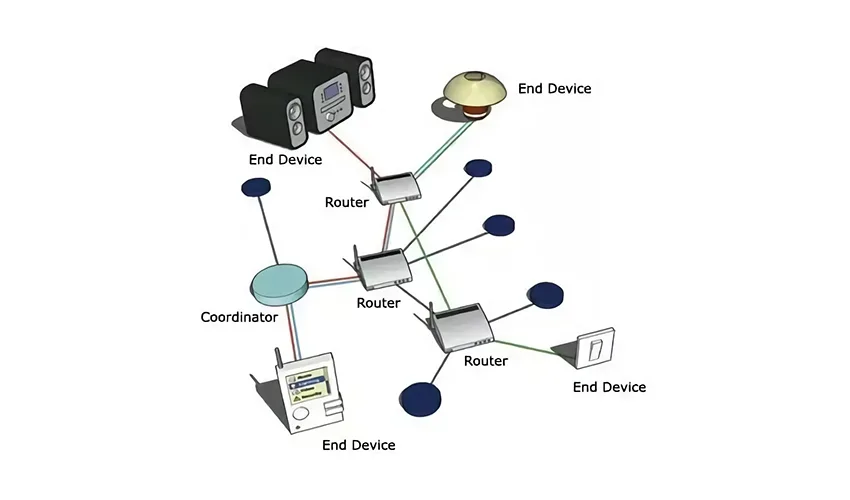
自動化且與科技同步的住宅
Smart Homes can have multiple individual pieces of interconnected technology. There may be a smoke sensor, alarm and camera equipment, and the best we could do before was point-to-point control. If you use the ZigBee technology, to link the fixtures, forming a “family”, it is then bridged to the gateway and then allows persons to monitor properties, without excessive tripping hazards or wiring problems.
醫療保健
Electronic medical monitoring is a recent research hotspot. 在人體安裝大量感測器, 比如脈搏, 血壓, 監控, 人體周圍的健康與環境, 由工作人員放置以監視和提醒他們, 例如在病房環境中, 這樣我們就可以隨時對人的身體狀況進行監測, 一旦出現問題, 能及時做出反應, 例如通知醫院工作人員. 這些感測器, 監視器和警報器可以透過ZigBee技術組成監控網絡. 它是無線的; 所以, 患者自由、高效.
感測器網路及其使用地點
感測器網路是研究熱點, 例如貨物追蹤, 樓宇監控 (安全), 環境保護, 以及許多其他使用領域. 感測器網路 成本低廉, 低功耗, 有自動聯網, 易於維護, 和高可靠性.
無線點餐系統
ZigBee 餐廳: 無線節點網路, through the deployment of ZigBee node devices in the restaurant, bar, kitchen, cash desk, and processing center constitutes a complete wireless communication network, to realize the automation of information processing.
智慧交通控制系統
Using ZigBee and solar energy combined with a wireless control system; without digging a road layout of control lines or wireless automatic network connections between the equipment not only reduces the system installation cost, 但更重要的是, avoids the traditional installation of the traffic disturbance caused by economic losses, and also avoids the rapid development of the city. Interference of road expansion and other changes to the original embedded pipeline are eliminated.
工業控制
The factory environment has a large number of sensors and controllers, which can be connected to a network using ZigBee technology for monitoring, enhancing operational management, and reducing costs.
自動抄表
Reading a meter may be something you are familiar with, such as a gas, electricity, or water meter. Monthly or quarterly readings may be taken, reported to the gas, electricity, or water company, and then charged based on the readings.
10. Zigbee 的歷史
Zigbee’s predecessor is the “Homerflite” technology launched by industry giants such as INTEL and lBM in 1998
在十二月 2000, a working group was established to draft the EEE802.154 standard. The Zigbee Alliance arrived in August 2001
Later in 2002, Vensys (英國), Mitsubishi Electric (日本), MOTOROLA (美國) and Philips Semiconductor (Netherlands) all announced joining Zigbee Alliance to build an improved network standard and call it Zigbee. This was a signpost in the industry.
It’s December 2004, the Zigbee10 or Zigbee2004 is finished. This marked the time when the standard for the Zigbee was developed.
Zig Bee1.0 standard was unveiled. It was downloadable in the fall of 2005. 在 2005, Huawei Technologies Co., Ltd., and BM Company joined the Zigbee Alliance. 很遺憾, the product could not produce the required attention regarding the lack of compatibility with older versions.
在十二月 2006, the standard was revised and Zigbee1.1 (Zigbee2006) was debuted. This was also incompatible with older versions.
在十月 2007, another revision of the Zigbee. This time it worked with older versions and became attuned to the needs of many areas, but most importantly: Smart Homes, Residential and Commercial Security applications and meter reading networks.
















